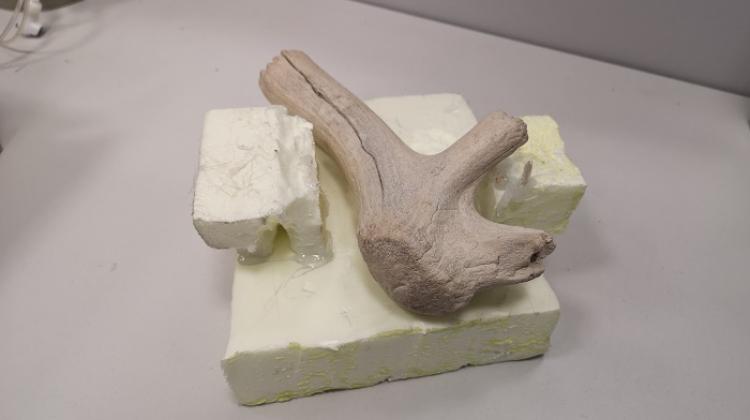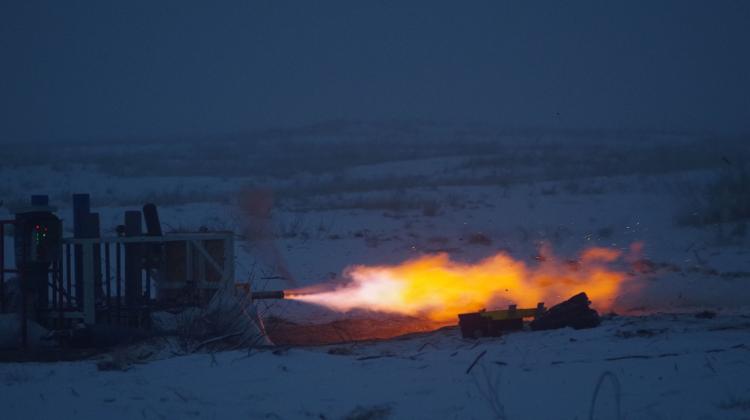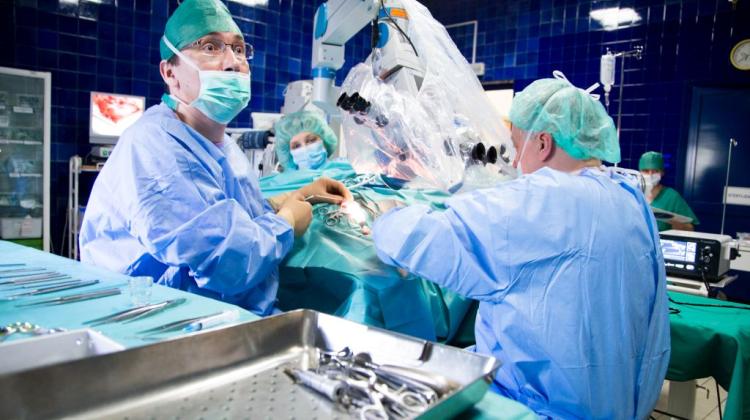Shoot laser at a plane to see microdamages

Each, even invisible to the naked eye defect in the fuselage of an airplane, sailboat or professional sports equipment can pose a threat. Team from AGH is working on a laser system for fast and accurate diagnosis of defects in composite materials.
Sheathing modern aircrafts - but also yachts, wind turbine blades and equipment for extreme sports (such as skis and kayaks) - is made from structural composite materials. They consist of a number of thin, laminated layers. If such a material is damaged, the layers may, for example, rupture or start to separate. And this would put passengers or users in danger.
Such damage, however, does not have to be visible from the outside - with the naked eye. Hence the need for systems for diagnosing whether the composite is intact. For example, from time to time - and after every "hard" landing - airplanes must pass a series of tests to determine whether or not microdamages have occurred.
Such diagnostic systems for composite materials have long existed, but they leave much to be desired. Some methods (NDT) are very accurate, but they work only locally - testing large objects is very slow. Other methods (SHM) - allow to diagnose large areas, but fail to identify the smallest defects. Dr. Łukasz Pieczonka of the Department of Robotics and Mechatronics, AGH University of Science and Technology, is working on a new method that will be both fast and accurate.
According to Dr. Pieczonka, his system to diagnose damages will use a laser. A billionth of a second pulse is shot at the composite and heats the material by a few tens of degrees C. A local - and lasting only a minute - thermal expansion of the material occurs, which in turn causes a mechanical wave to pass through the material. Information about the vibrations of the material is collected from the composite with a laser vibrometer. "If there are any damages or cracks in the material, the wave will be reflected, refracted, or change its properties. By analysing the wave we can find out whether the composite is intact" - Dr. Pieczonka said in an interview with PAP.
The use of lasers in the system is convenient because it eliminates the need for touching the material or installing sensors on its surface. Tests may be performed remotely - from a distance of several meters. The movement of the laser head can be precisely controlled by electronic devices. Therefore, large areas of the material can be analysed with a precision of microns. This makes the measurement not only fast, but also very precise.
"The device will ultimately be the size of a small fridge. It would have wheels, so it could easily be moved" - said Dr. Pieczonka. He added that the operation of the system would not be difficult enough after short training. The system would analyse the data and alert of the detected defects.
According to the researcher from AGH, one of the most difficult tasks will be to determine the optimal laser pulses, which will be shot at specific composites (laser pulses will be different for different materials). After all, the laser - during defect detection - should under no circumstances cause any additional defects. Researchers will have to analyse it very carefully.
The project will also develop software for analysis of waves that propagate in the test material. "In the classical methods, only the longitudinal and transverse waves are analysed. And we\'ll also analyse another type of waves - so-called guided waves. This is an upgrade that will make our diagnosis more accurate" - hopes the researcher from AGH. He added that the motion of particles in guided waves is not linear, but elliptical.
Łukasz Pieczonka conducts research under the LEADER programme of the National Centre for Research and Development. The prototype device is expected to be built over in next three years.
PAP - Science and Scholarship in Poland, Ludwika Tomala
lt/ mrt/
tr. RL
Przed dodaniem komentarza prosimy o zapoznanie z Regulaminem forum serwisu Nauka w Polsce.

















